The content of the article
Some diseases of humans and animals are very similar. However, the problem of tooth loss does not exactly apply to them. What does a person do when his tooth hurts? Right, goes to the dentist. Fluffy family members, unfortunately, cannot tell the owner that their teeth hurt, therefore, as the person responsible for the animal, the latter needs to know important information that will help prevent serious problems with the pet’s health.
To begin with, it should be understood that cats lose their teeth for three main reasons:
- Natural natural process. Youth - youth - old age.
- Diseases, of which there are many.
- Injuries.
Natural natural process
Like small children, kittens are born without teeth, but they grow much faster than in children. “Milk” teeth begin to crawl out by about the 7th or 14th day of the animal’s life. Approximately on the 90th day of life, the kitten is already “armed” with a set of 26 teeth. Milk teeth are rather weak in comparison with permanent ones. They have a very thin enamel, an insufficient amount of hard tissue. Which, in fact, leads them to an early loss. At about the 5th month of the kitten’s life, “milk” teeth begin to leave their owner. Gradually begin to break through the indigenous. First they are incisors, then fangs, etc. By the end of this process, the kitten is already armed with 30 healthy and strong teeth, which he, in fact, demonstrates to the owners.
This change process is accompanied, as a rule, by the following factors, according to which the owner can catch the moment of replacement of “milk” teeth with permanent ones. It:
- Strong salivation.
- Slight lethargy of the animal or vice versa hyperactivity.
- The kitten begins to gnaw everything that it sees in its path.
- Slight bleeding in the gums.
- Milk teeth are loose.
- The kitten begins to eat poorly.
As a result, the whole process of tooth replacement ends around the 7th month of the kitten's life. A change of teeth is usually noticeable. New teeth grow next to old ones, and differ in appearance. "Milk" is usually sharp, curved and noticeably thin. Permanent teeth are straight, rounded and stronger.
Kitten care during tooth change
Many veterinarians advise kittens to be given vitamin complexes on a regular basis, but this should only be done if there is direct evidence from a doctor, since an excess of certain groups of vitamins can also adversely affect a pet’s health.
Old cats
The main sign of old age in cats is the poor condition of their teeth. By old age, the animal erases its teeth. First, these are incisors from the sides of the lower jaw, which, the older the animal becomes, change shape to oval. Fangs are the last to be erased, which rarely occur in older pets.However, a cat “over the age of 12” does not have most teeth.
Care for such an animal is the same as for kittens. This is an examination - to identify deviations from the normal process of tooth loss (the development of certain diseases, inflammations, etc.), and the selection of the correct, exceptionally soft food. It should also be rich in vitamins that will make up for their loss in the body of the animal.
Diseases
Contrary to popular belief, tooth loss in cats is not only a signal about the appearance of diseases of the oral cavity. There are times when cats lose their teeth due to:
- Weakened immunity.
- Vitamin deficiency.
- Failure in the metabolic processes of the body.
- The use of a large number of drugs and hormones.
- Genetics.
- Wrong bite.
- Infections and viruses in the body.
- Diseases of the digestive tract.
- Oncology.
Only a veterinarian can confirm the presence of various reasons after a professional examination of the animal and receipt of all tests. Therefore, it is necessary to regularly monitor the health status of the animal. This is important for timely contact with a veterinarian.
One of the main causes of tooth loss in cats is oral disease. Usually they are accompanied by:
- Bad smell from the jaws of an animal.
- Increased bleeding gums.
- Strong salivation.
- Loss of appetite due to pain during eating.
- The presence of tartar.
- Swelling of the gums.
- The presence of pus on the gums or in saliva.
- Aggression or irritability.
- The increased attention of the animal to the jaw, i.e. desire to constantly rub the face on the paw or other objects.
- Sleep disorder.
Important! These symptoms can be the cause of other serious diseases.
Below are a number of the most common diseases of the oral cavity of cats:
- Tartar. Basically, the stone is visible on the teeth of cats that have reached the age of 3 years. It is a mixture of food, saliva and bacteria, which are mineralized and coated with teeth. This plaque can cause inflammation and injure the gums, and the bacteria that it contains can destroy the teeth.
- Stomatitis. This is a consequence of the development of tartar, caries, the use of hot and cold in food or drink, rough nutrition and the development of other ailments. This is an inflammation of the mucous membrane of the mouth, which can spread not only to the teeth, but also to the tongue and gums. The neglected inflammation is transferred to the jaw bone and the teeth themselves, which subsequently fall out.
- Gingivitis. It is also an inflammation, it only extends to the gums. Accompanied by bleeding, soreness and swelling. An ailment appears due to improper oral hygiene and looks like plaque containing bacteria.
- Periodontitis. Inflammation, which is a consequence of gingivitis. This disease very quickly loosens the teeth, which contributes to their loss.
- Caries. This disease is directly related to tooth enamel. It destroys the hard tissue of the teeth.
- Pulpitis and periodontitis. Diseases that result from untreated caries. This inflammation in both cases, which affects the integrity of the tooth at different stages, but leads to one outcome - tooth loss and possible sepsis.
- Dysbacteriosis This is a change in the flora of the oral cavity in favor of a pathogenic one. It is he who is the main reason for the appearance of a number of diseases of the oral region in cats.
Injuries
Loss of teeth can also be in an isolated case due to an unsuccessful fall or impact. The only way to prevent these consequences is to contact a veterinarian who will surgically restore the integrity of the jaw and give recommendations on caring for the animal.
In conclusion, it should be noted that only a veterinarian can provide competent treatment for injuries and diseases of the oral region, as well as give a list of preventive measures for tooth loss. The only thing the owner of the animal can do on his own is to carefully draw up a cat's diet, rich in vitamins and minerals necessary for it, as well as appropriate for the age of the animal, and conduct regular inspection of the pet.
Video: how kittens change teeth

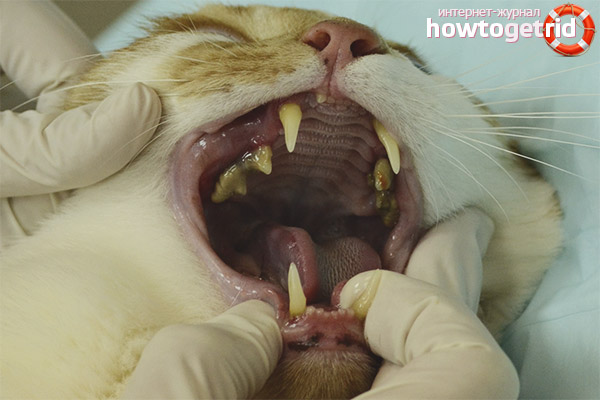
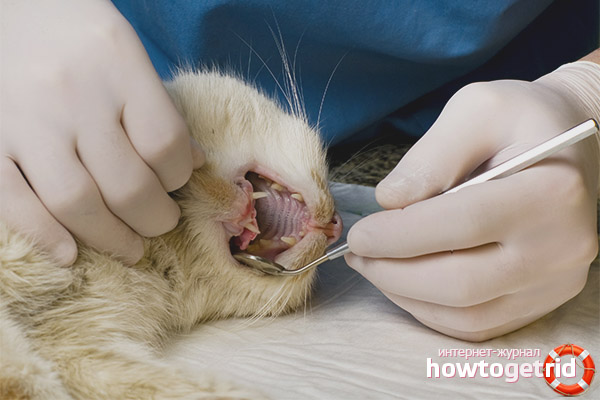



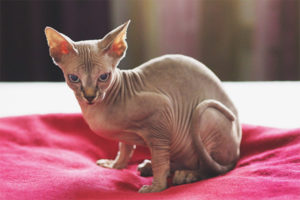
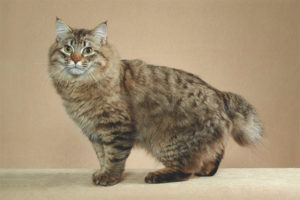
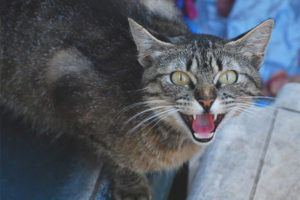
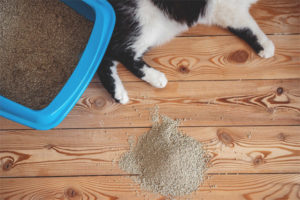
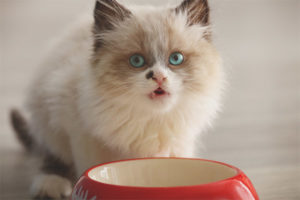
Submit